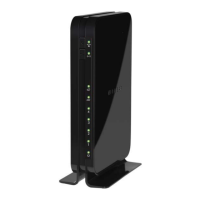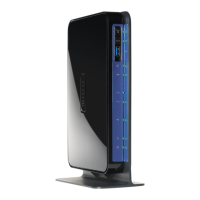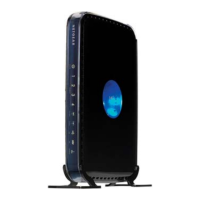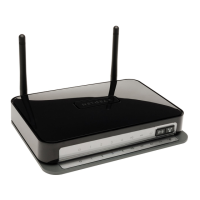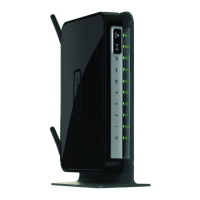Wireless Settings
34
N150 Wireless ADSL2+ Modem Router DGN1000
WEP Encryption
WEP uses an old encryption method and can be easily decoded with today's powerful
computers. Use this mode only when you have a very old legacy wireless client that does not
support WPA-PSK. The Wi-Fi alliance highly recommends against using WEP and plans to
make it obsolete. If you do decide to use WEP, see Set WEP Encryption and Passphrase on
page 42 for the procedure.
WPA Encryption
WPA encryption is built into all hardware that has the Wi-Fi-certified seal. This seal means
the product is authorized by the Wi-Fi Alliance (http://www.wi-fi.org/) because it complies with
the worldwide single standard for high-speed wireless local area networking. For information
abou
t how to use the WPA home options, see Change WPA Security Option and Passphrase
on page 41.
• WP
A-PSK uses a much stronger encryption algorithm than WEP so it is harder to decode.
This option uses a passphrase to perform the authentication and generate the initial data
encryption keys. Then it dynamically varies the encryption key. WPA-PSK uses Temporal
Key Integrity Protocol (TKIP) data encryption, implements most of the IEEE 802.11i
standard, and is designed to work with all wireless network interface cards, but not all
wireless access points. It is superseded by WPA2-PSK.
• WP
A2-PSK is the strongest. It is advertised to be theoretically indecipherable due to the
greater degree of randomness in encryption keys that it generates. WPA2-PSK gets
higher speed because it is usually implemented through hardware, while WPA-PSK is
usually implemented through software. WPA2-PSK uses a passphrase to authenticate
and generate the initial data encryption keys. Then it dynamically varies the encryption
key.
• WPS-PSK
+ WPA2-PSK Mixed Mode is the preconfigured security mode on the wireless
modem router. NETGEAR recommends mixed mode because it provides broader
support for all wireless clients. WPA2-PSK clients get higher speed and security, and
WPA-PSK clients get decent speed and security. The product documentation for your
wireless adapter and WPA client software should have instructions about configuring their
WPA settings.
• WP
A-802.1x is enterprise-level security and requires an authentication server to
recognize and authorize client access. The authentication server is called Remote
Authentication Dial In User Service (RADIUS). Every wireless client has a user login on
the RADIUS server, and the wireless modem router has a client login on the RADIUS
server. Data transmissions are encrypted with an automatically generated key. For
information about how to use the WPA enterprise option, see Set WPA-802.1x Server and
Passphrase on p
age 41.
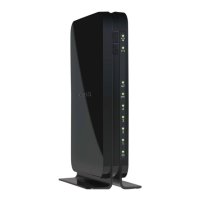
